Understanding Saltwater Intrusion
Introduction
Many organisms on our planet rely heavily on freshwater for survival, including humans. When key sources disappear due to drought or contamination, then drastic changes occur to the local ecosystem. Saltwater intrusion is one such cause of contamination of freshwater, which is impacting drinking water and causing agricultural lands to become unusable across the globe. The remainder of this article goes over why saltwater intrusion happens, how to measure it, and how to prevent it.
Why does saltwater intrusion occur?
Freshwater naturally flows from higher to lower elevation, either soaking into the ground or flowing across the earth’s surface to the ocean. Seawater, on the other hand, soaks into the ground and pushes freshwater inland. This is because salt makes the seawater heavier than fresh water.
As depicted in Image 1, the force from freshwater flowing to the sea and saltwater flowing inland balance out in an underground zone known as the interface. The position of the interface varies by location depending on soil composition, weather, and human activity. The rest of this section mainly focuses on how humans are affecting the interface and causing an increase of saltwater intrusion.
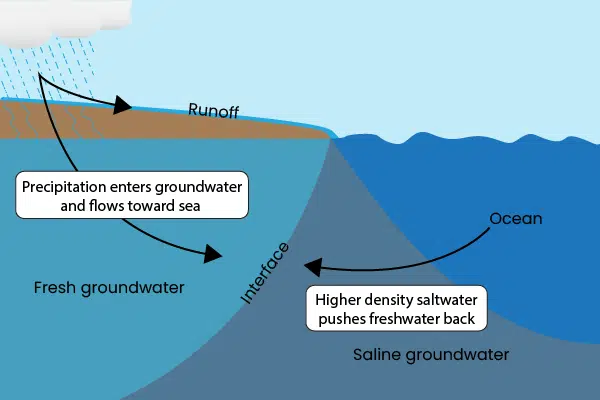
Image 1. Forces of Saltwater Intrusion – Arrows represent the natural flow of water without human intervention. A balance between freshwater and saltwater flow is found at the interface underground.
With the ever-increasing global population, groundwater usage for drinking and crop production also continues to rise. As a result, groundwater is being depleted in many regions because the natural water cycle does not provide enough precipitation to replenish the freshwater being removing. In turn, the reduced volume of freshwater means there is less force pushing saltwater back, leading to the interface moving inland. On the planet’s surface, reduced freshwater flow leads to saltwater traveling upstream or through marshes, then leaking into the surrounding soil.
Not only do humans use more water, but we also impact precipitation volumes through climate change. Weather patterns are being disrupted around the globe, with many areas experiencing higher temperatures and more severe droughts than in recent history. This reduced rainfall and increased evaporation worsens the problem of saltwater intrusion in many areas. In addition, rising sea levels also push saline water inland, further exacerbating the problem.
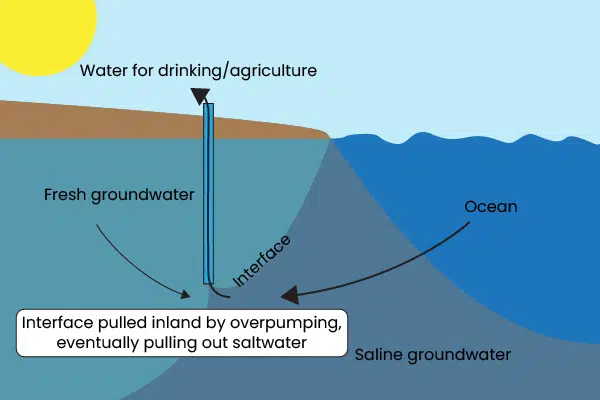
Image 2. Forces of Saltwater Intrusion with Human Interference – An imbalance is created in groundwater flow when humans pump out water, resulting in saltwater moving inland.
How our world is impacted
As freshwater sources become contaminated with salt, natural ecosystems become unstable–and humans are not exempt from these effects. According to the Stockholm International Water Institute, “at least 2 billion people of the 7.6 billion on Earth use groundwater as their primary source of water”. This reliance on groundwater means that nearly 50% of the world’s aquifers are being depleted and may not be capable of natural recovery.
As fresh groundwater depletes, populations of people lose access to drinking water, which may result in conflict. Food also becomes scarce when saline stunts or prevents crop growth, thereby putting more stress on already strained regions.
Even when rainfall does arrive and replenish groundwater, the intrusion of saltwater leaves scars on the land. Due to the chemical properties of saltwater, more nutrients dissolve in it and get carried away in runoff, leaving once fertile land unable to grow crops. When the nutrient-rich water meets a natural waterway, the extra nutrients lead to algal blooms that kill aquatic species. As you can imagine, this chain reaction of events makes it difficult to predict how much any given region will be impacted. The best we can do is try to prevent saltwater intrusion from happening.
How is saltwater intrusion monitored?
To prevent saltwater intrusion, we first must understand how the process works in each location. To do so, scientists monitor various groundwater parameters in affected areas to detect changes over time. The most common method is drilling multiple wells in a region so samples from various depths may be analyzed. This may mean collecting samples in bottles and sending them to labs–or inserting water quality sensors like the pHionics STs Series™ down wells to track salt intrusion in real time. Commonly collected data includes depth-to-water, conductivity, pH, temperature, and optionally dissolved oxygen, ORP, or turbidity. By tracking these in multiple wells, scientists create a map of groundwater levels and health, then determine the interface location of fresh and saltwater.
In addition, geophysical loggers are lowered into the well to map the soil composition and major geologic formations that affect water flow. One example of how geology affects groundwater movement is seen in areas containing clay layers. Clay is extremely compact, allowing little to no water flow through it. As shown in Image 3, clay prevents surface water from reaching the underground aquifer to replenish it after precipitation. The clay layer is detrimental if the aquifer is being over pumped, but it is also protective if saltwater intrudes into groundwater from above by preventing salt from reaching the deeper aquifer.
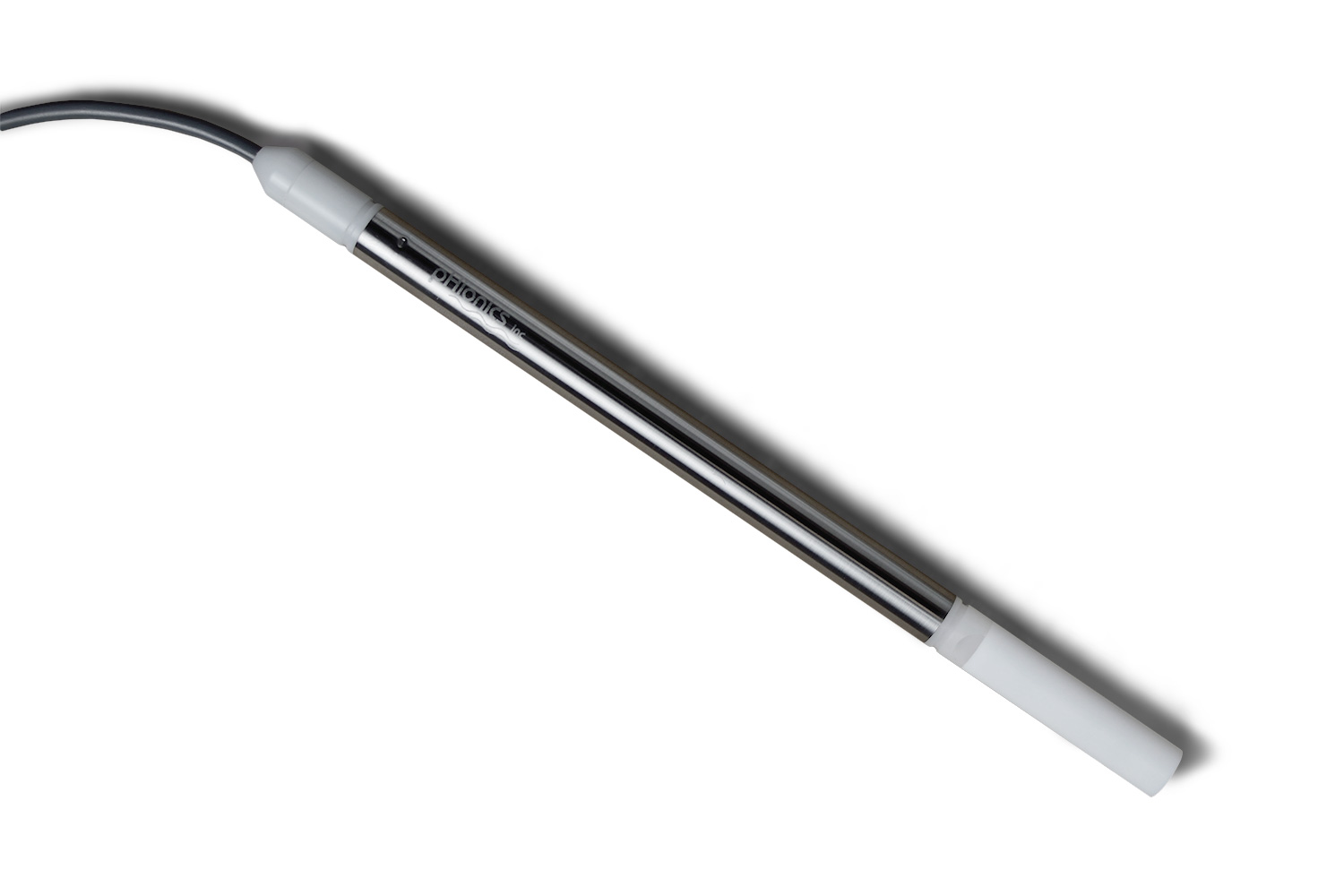
STs Series Conductivity Sensor
For saltwater intrusion monitoring
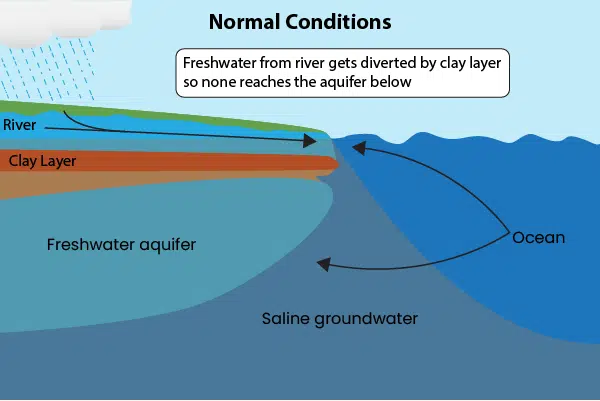
Image 3. Effect of Clay Layer on Water Flow
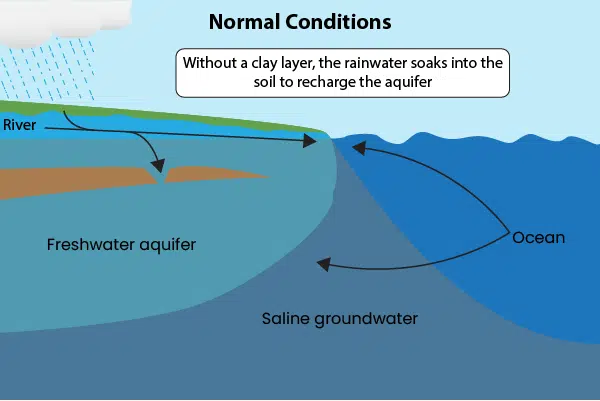
Image 4. Normal Water Flow Without Clay Layer
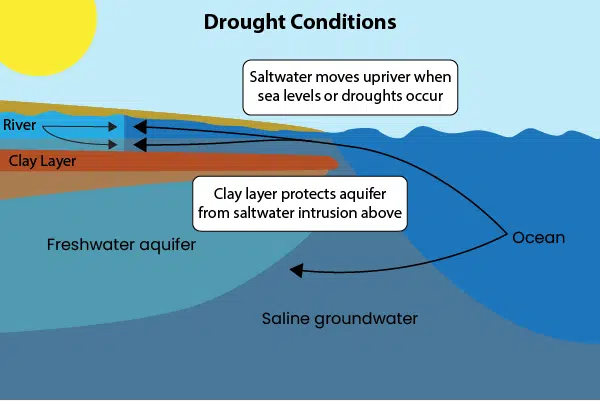
Image 5. Effect of Clay Layer on Water Flow During Drought Conditions
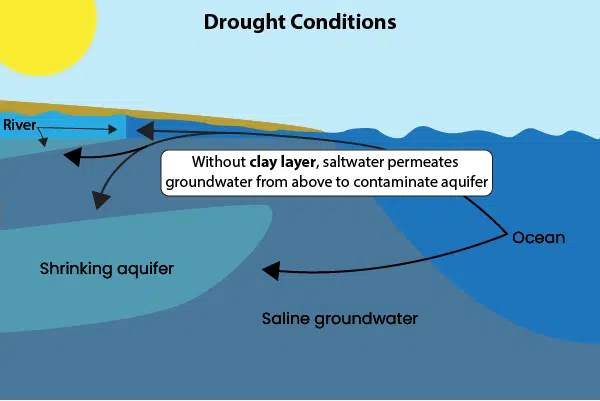
Image 6. Effect of Saltwater Intrusion During Drought without Clay Layer
Solutions To Saltwater Intrusion
There are a variety of ways that humans may prevent or reduce saltwater intrusion in a given area. One solution is to use materials with low water permeability (such as clay) to separate freshwater from saltwater. By building a wall with impermeable material, we effectively control the interface to prevent saltwater from pushing into freshwater. This method would alter the environment and potentially lead to unforeseen ecological problems in the future, though, so other solutions may be better.
The best solution is to reduce human water withdrawal in threatened regions, when possible. Doing so may be difficult for growing populations reliant on groundwater, however, as it is expensive to change locations of wells or ship water into the region.
In addition, any water regulation must have a means of enforcement, which is not possible in places where governments do not “own” groundwater. This includes areas in the United States, like Texas, because landowners technically own all the resources on—or below—their land.
Another solution is to artificially recharge aquifers through infiltration structures such as percolation tanks, spreading basins, or injection wells. These structures are built over areas of porous rock to trap water runoff, forcing water to drain into the soil and recharge the aquifer. Regional ecology may be impacted if too much runoff is diverted into infiltration structures, however, so this method also has risks.
As each region has different soil, weather, and human activity, no single solution works around the globe. Unless a combination of methods is used, food and water shortages will become more common, worsening with the rising sea levels caused by climate change. We also must be alert to at risk areas, monitoring groundwater for signs of saltwater intrusion and taking preventative measures.
Conclusion
Humanity has the passion and ingenuity to solve problems like saltwater intrusion, along with the other effects of climate change. To everyone learning about these issues and looking for solutions, pHionics thanks you and will continue to support groundwater monitoring to the best of our abilities.
For any questions or comments about the article, please reach out using our contact page by clicking on Contact Us below.
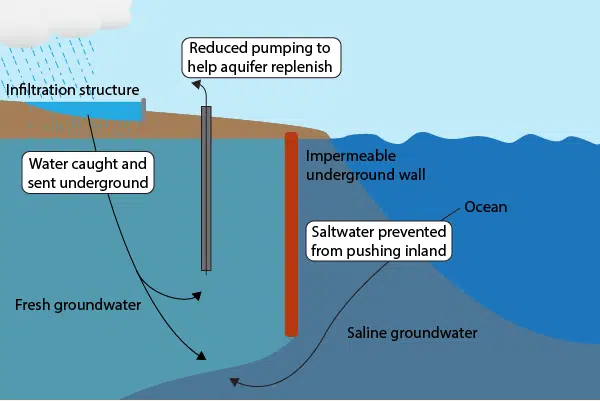
Image 6. Various Solutions to Reduce Saltwater Intrusion – Example of how reduced water usage, infiltration systems, and impermeable material injection solutions affect groundwater balance.
Suggest an Article or Video Topic!
Recent Articles
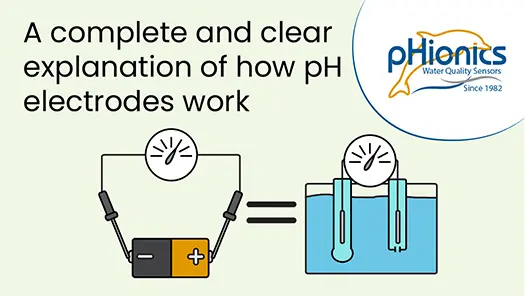
How Glass pH Electrodes Work
In this video, learn about the electrochemistry that allows silver/silver chloride pH electrodes to measure the acidity of solutions. Modern electrode design is also reviewed to demonstrate what improvements have been made and what weaknesses are still present. Click...
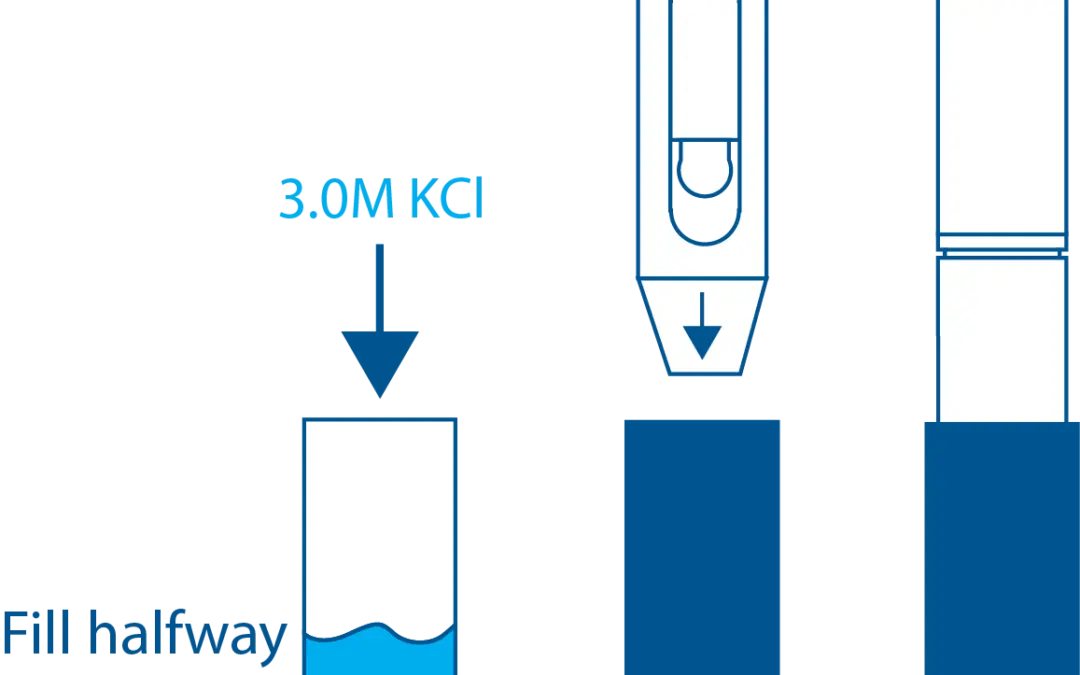
STs Series Sensor Storage
STs Series sensors are constructed from high-quality, durable materials that can be stored for long periods of time. The only weak point is the electrode, which can be damaged or expire during storage in the wrong conditions. These conditions vary depending on the type of electrode, which is why we have different storage instructions for each sensor.
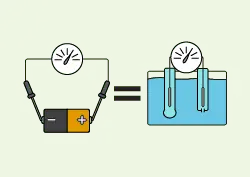
How a Glass pH Electrode Works
A comprehensive article covering how glass electrodes measure pH in a simple, understandable format. Specifically for silver/silver chloride electrodes.
